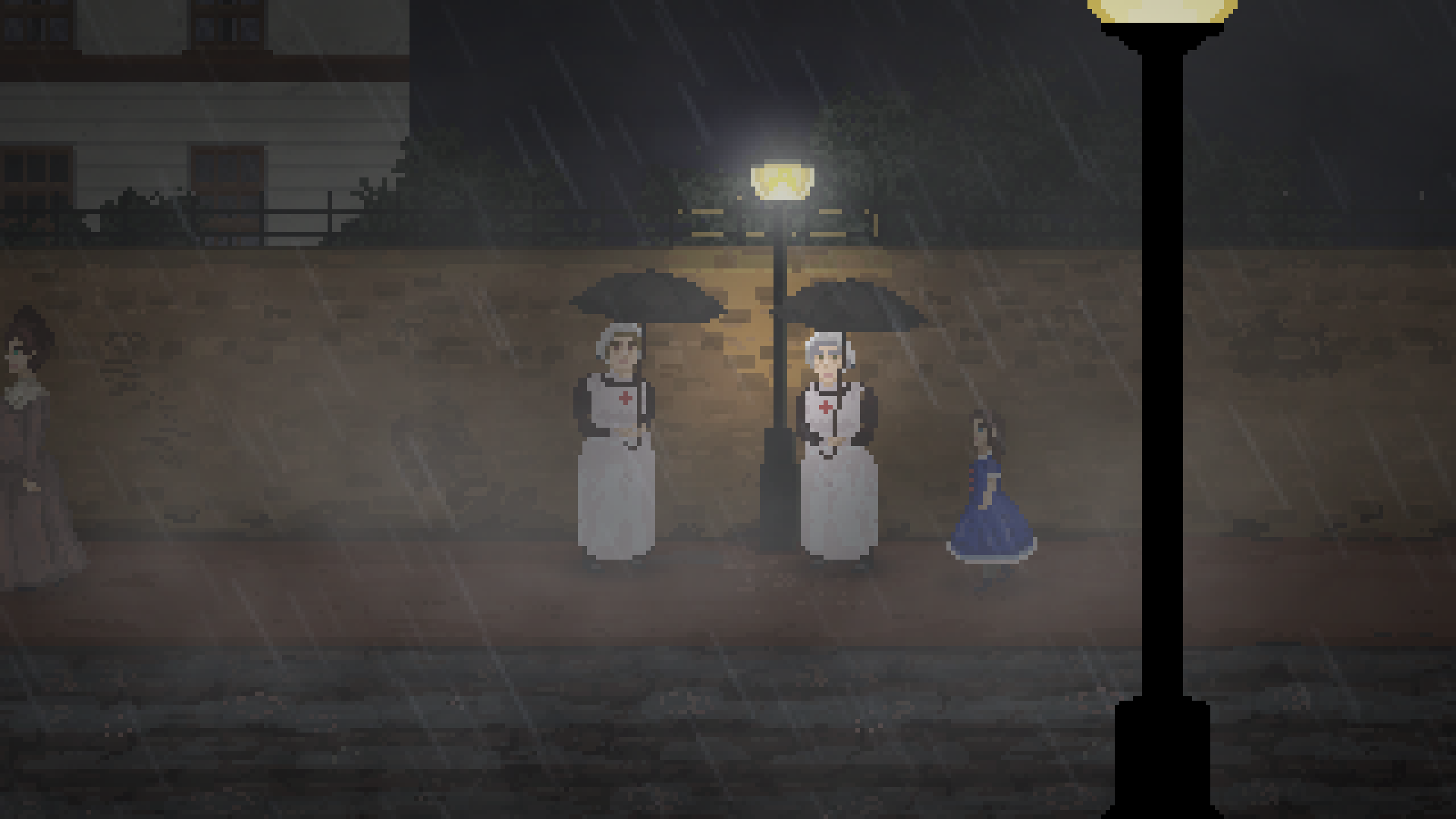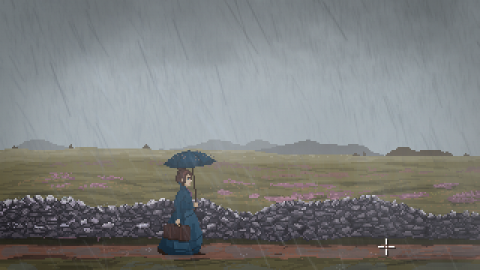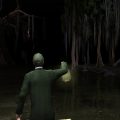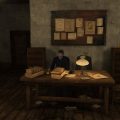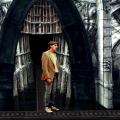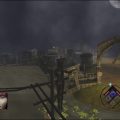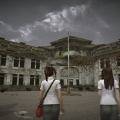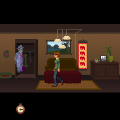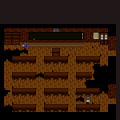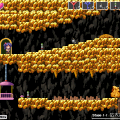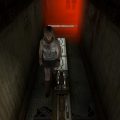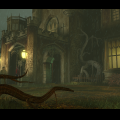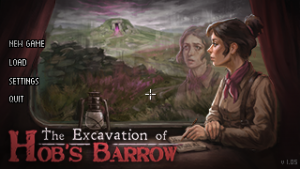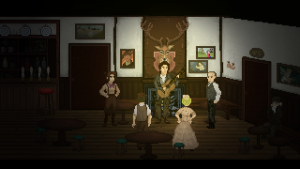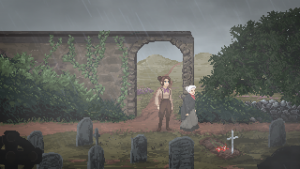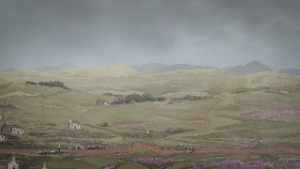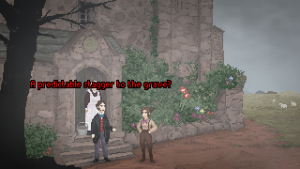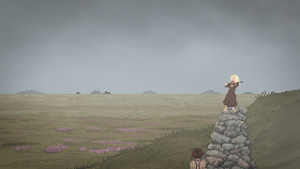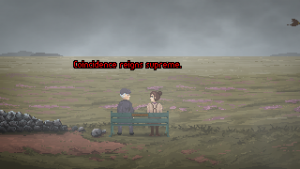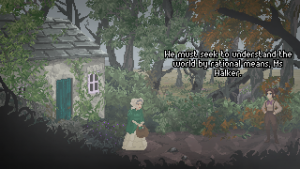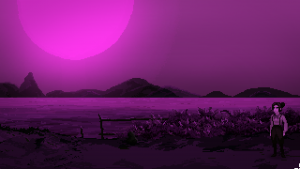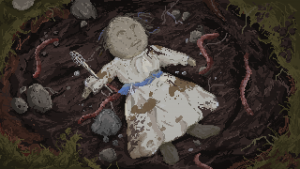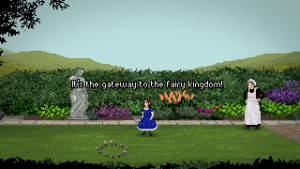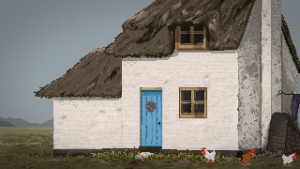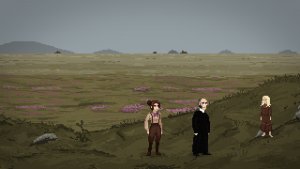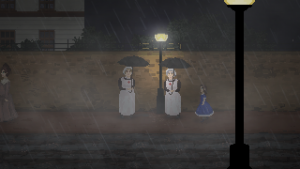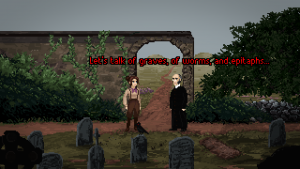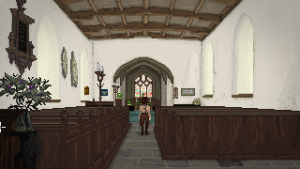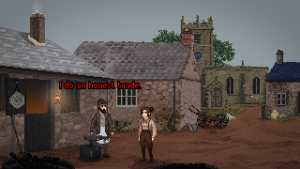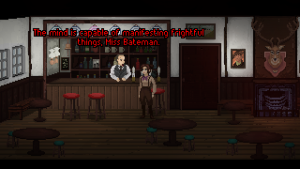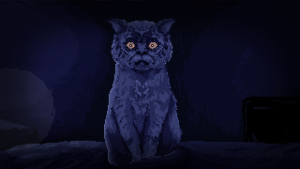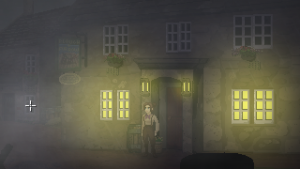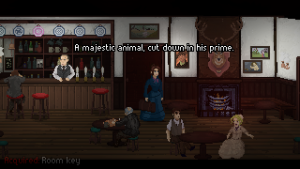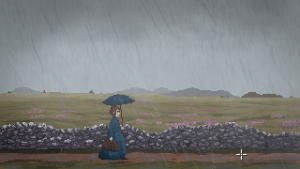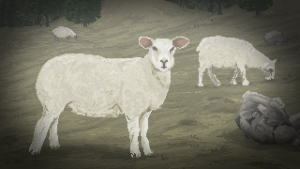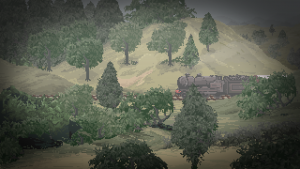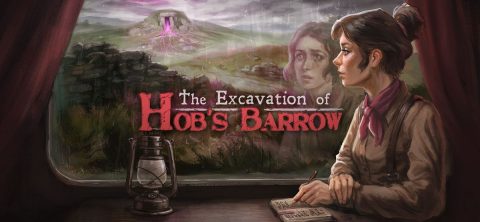
After a short break in activity after Unavowed (though some studio members assisting on projects by other studios), Wadjet Eye has become active again with the publication of two horror games in the early 2020s. Neither is exactly what you would expect. The first of them, Strangeland, was made by the Primordia developers and was a very abstract and artistic game about personal tragedy the developers dealt with in their lives. The other, The Excavation of Hob’s Barrow, is a folk era, eldritch horror story that has influences even older than Lovecraft.
The premise places you in the shoes of one Thomasina Bateman, an English woman interested in antiques and barrow digging (barrows being graves hidden in hills and stones). She’s come to the small village of Bewlay upon getting a letter from a man named Leonard Shoulder about a local one called Hob’s Barrow, though encounters early complications. Shoulder is nowhere to be seen, her assistant had to stay in London and sent the supplies over without any money, and the village itself proves to be a fairly strange place fairly quickly. Things start to grow sinister as Thomasina starts having strange dreams and visions, and begins to realize there’s much more to Hob’s Barrow then she first thought.
This is more the work of Cloak and Dagger Games than Wadjet Eye, not even using the studio’s talented artists (outside Ben Chandler working on Thomasina’s sprite). Besides that, they mostly helped out via Ivan Ulyanov doing some promo art and the title screen, and Dave Gilbert helping a bit with narrative elements and handling voice direction. That last bit is odd, because we don’t have any of the usual Wadjet Eye VA talent pool, but instead a mix of never heard of before VAs and vets who you have seen in surprising places. How surprising? Thomasina is voiced by Samantha Béart, who you may recognize from Nelly Cootalot: The Fowl Fleet, and as Karlach in Baldur’s Gate 3. Yes, *that* Baldur’s Gate 3.
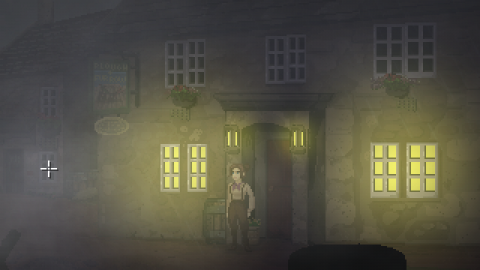
The end result is something that feels very unique in the Wadjet Eye catalog – heck, it feels unique for the entire modern point and click scene. The usual influences aren’t present, the team instead citing Montague Rhodes James, a non-Lovecraft influence on the cosmic horror genre, as their main influence. Putting aside some of his bad options (though seemingly nowhere near as bad as Lovecraft’s), taking notes from his work results in a much fresher take on the usual Lovecraftian horror fair.
The lore poisoning and funky fish people is traded for more traditional ghost stories that had a slow burn style that drew you in with the mundane, making the absurd and surreal stick out more when they popped up. It helps the game also takes stylistic elements from a similar movement in horror cinema, using editing and sound design techniques not uncommon from what we’re seeing in the modern “elevated” horror movement today.
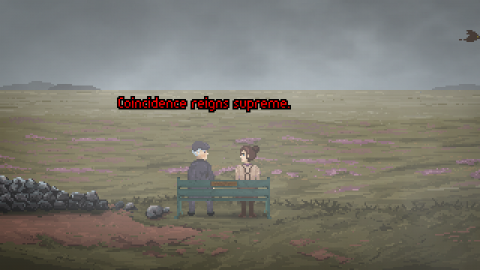
This can be felt initially in the unorthodox sound design, often using ambient noise instead of a traditional score. It helps push the oppressive and empty nature of the moors surrounding the village, or express the natural life in the nearby woods. When the score does show up, it tosses out the expected of the times sound (outside one fiddle scene) in exchange for heavy synth and droning pieces. It’s a very unexpected sound at first, but the more you come to understand the horror elements at play, the more the unnatural sound starts to click in creating a mood.
The game also uses a lot of cinematic tricks in its presentation. Extremely sudden jump cuts happen a lot to transition to flashbacks, internal monologue, and the off-putting animated close ups, a signature of Cloak and Dagger’s previous efforts. While those close ups can look odd at times (particularly with the eyes), they often work great to sell the horror of a situation at a few points. They’re also built around fullscreen high resolution framing, something Wadjet Eye themselves are still trying to grapple with in their sprite art (detail tends to be lost when fullscreen when dealing with Chandler and Ulyanov’s work). All this results in techniques that serve the game’s horror, the filmic techniques popping up both in mundane portions built up as something horror related, and going much harder when actual horror segments do appear.
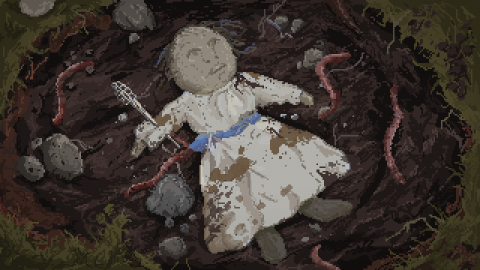
The actual point and click game in all this is as solid as you would expect for a Wadjet Eye release. There’s good puzzle grouping by setting the game over several days. Each day gives you a unique series of tasks, and you pursue them in the familiar map of Bewlay, more of it opening up as the game progresses. None of the puzzles are particularly complicated, though, mostly taking items to the right place, with the odd moment where you need to figure out the significance of a clue. What’s more interesting is the use of dialog choices, which don’t actually affect much at all – which is the point, as Thomasina’s narration from just the start of the game tells you in no uncertain terms that a bad ending is ultimately awaiting you on this quest.
As a horror game, The Excavation of Hob’s Barrow is a unique entry on the scene, tapping into a sort of dread often not seen in an industry mostly interested in survival horror. The horror doesn’t come from monsters or even psychological elements the character has to deal with in the horror itself, but tapping into real cosmic horror story beats without obsessing over the actual lore of the horror itself. A lot never gets explained, ultimately to the overall positive effect of the story told itself, matched by clever presentation choices.
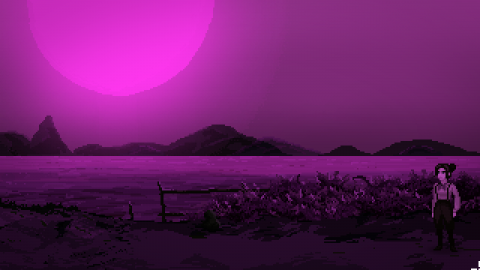
Even without inner demon monsters, the complexities of Thomasina’s mental and emotional state still play into the story in an effective manner, her motivations bringing her to a grim fate. It’s still a character focused piece without taking too many notes from Silent Hill 2‘s long shadow over the genre. It steps away from hiding from monsters some adventure games have worked in after Amnesia‘s dominance. It’s an adventure game inspired by ghost stories of older literature, and translates the strength of that medium and its ideas in a way most games never try to. It’s oddly unique in its old fashion inspirations, and really stands out for it.
